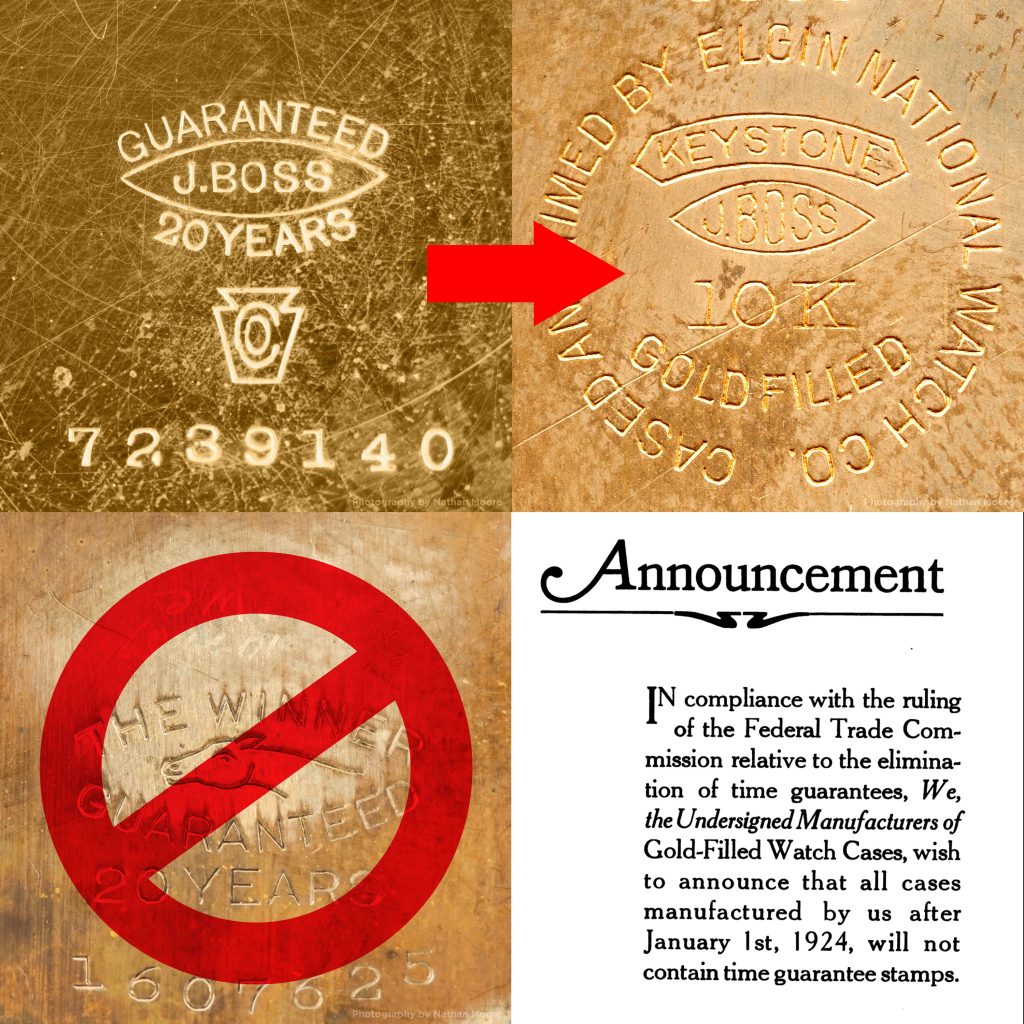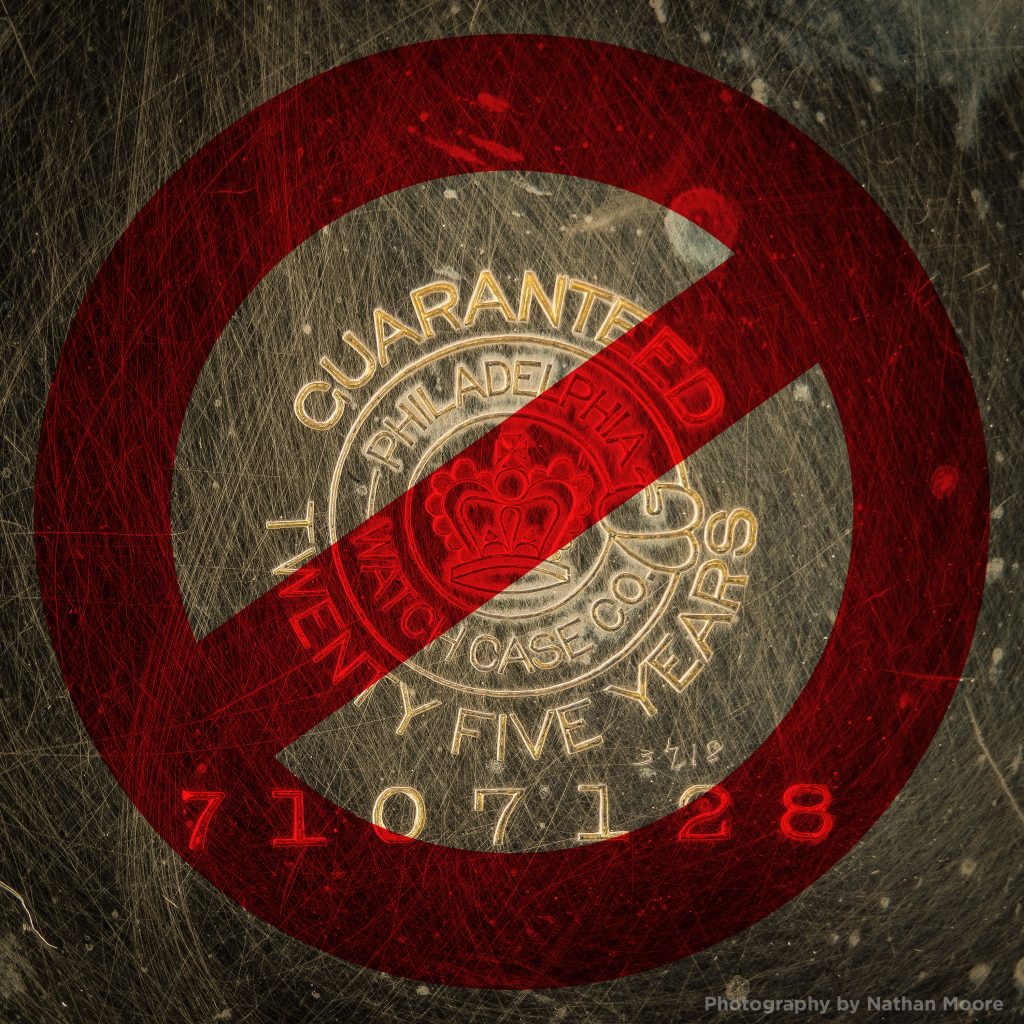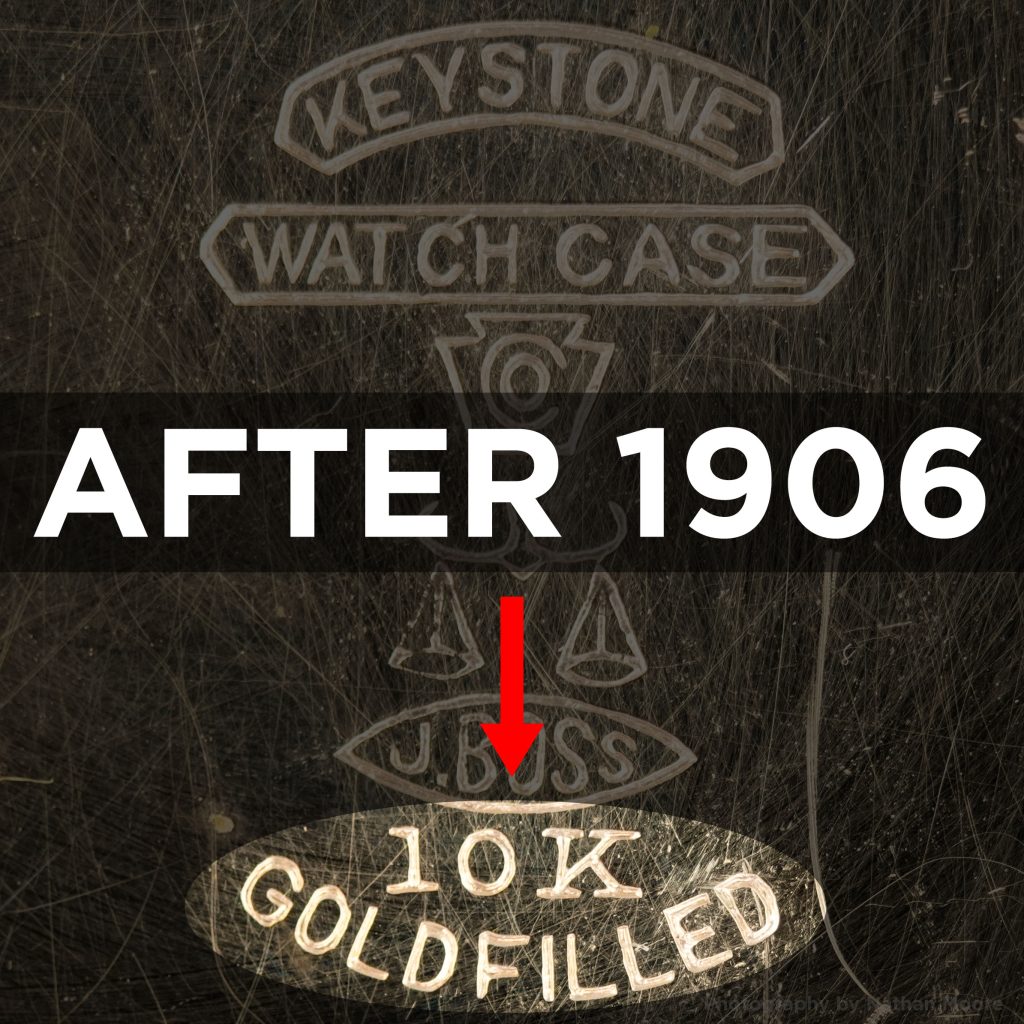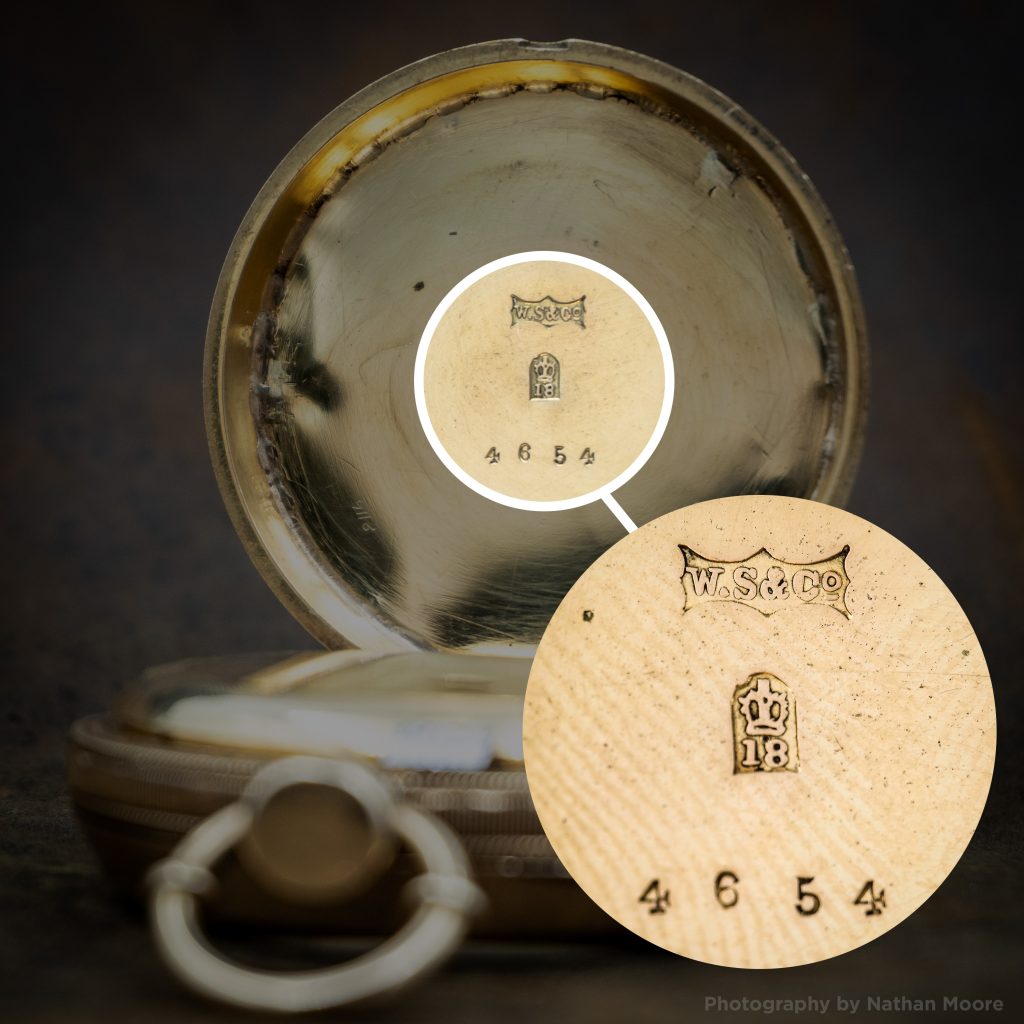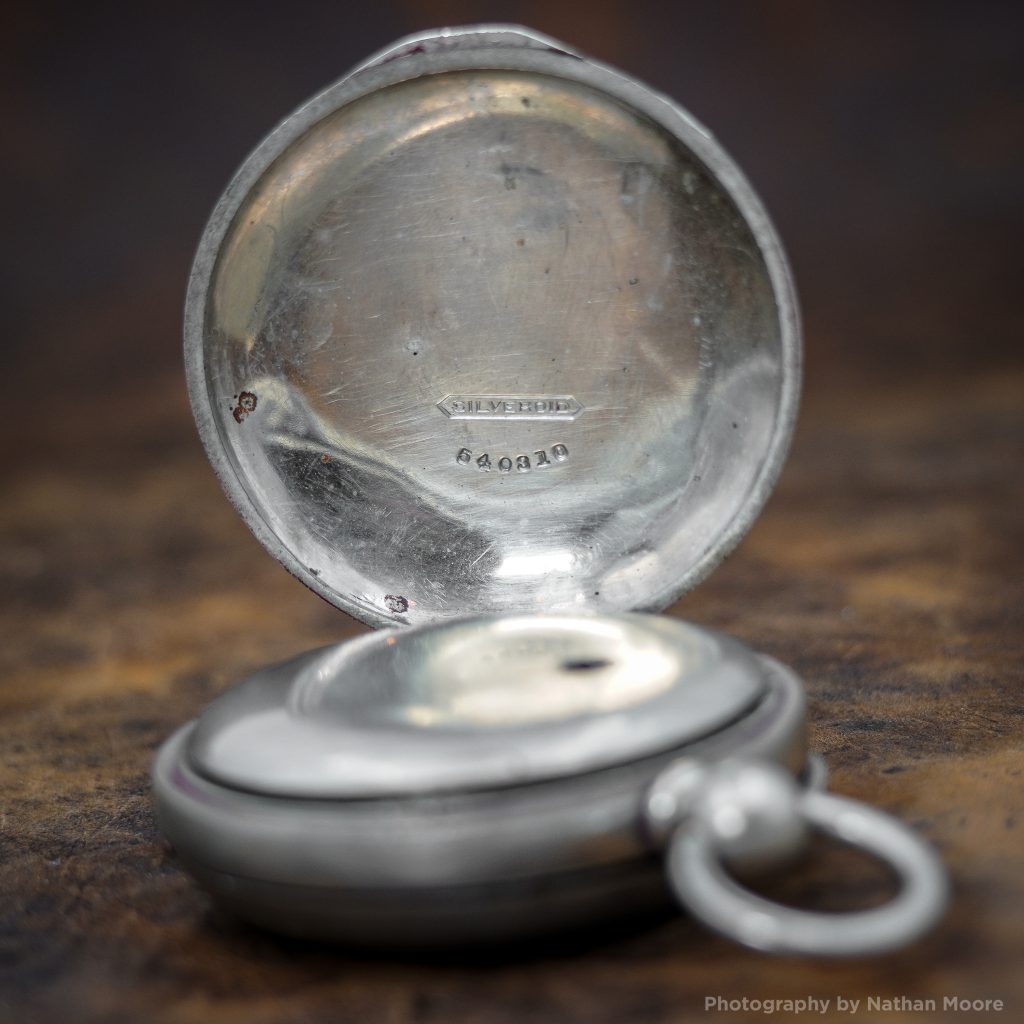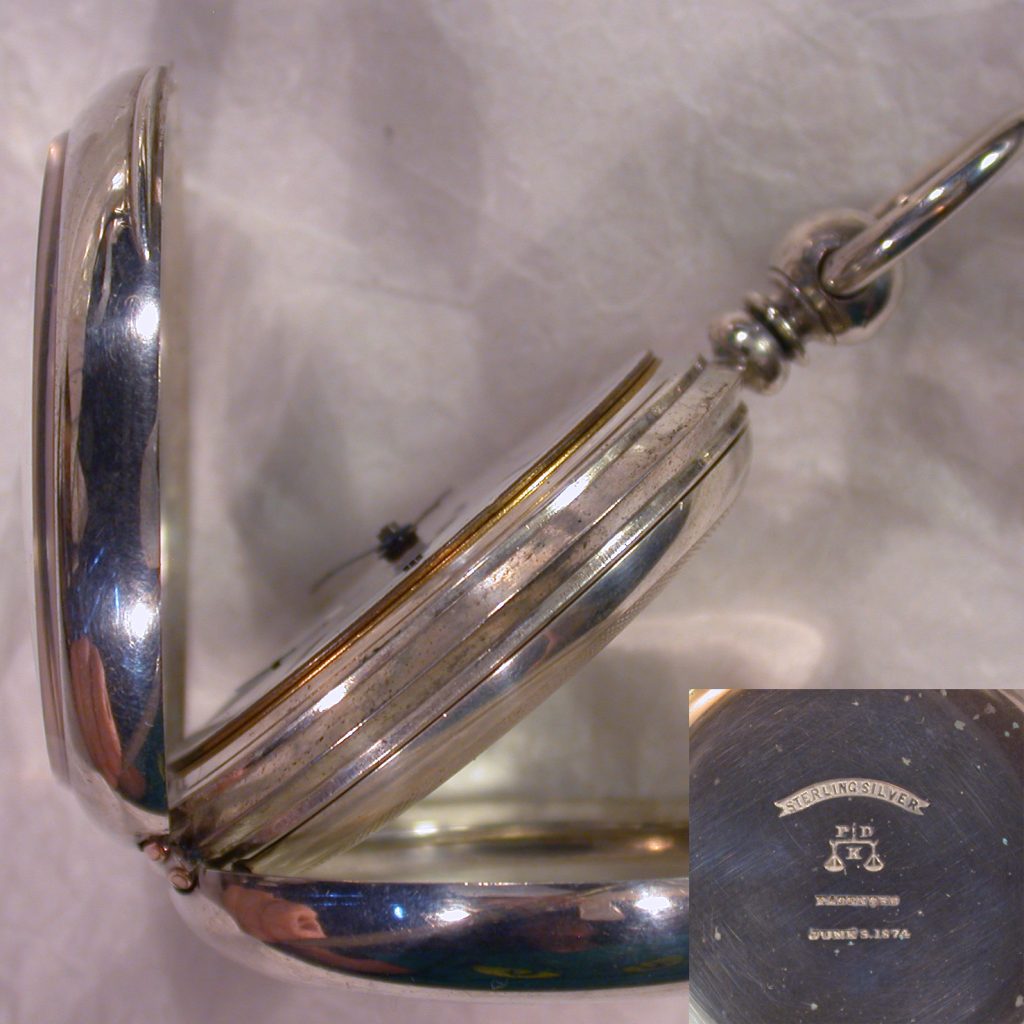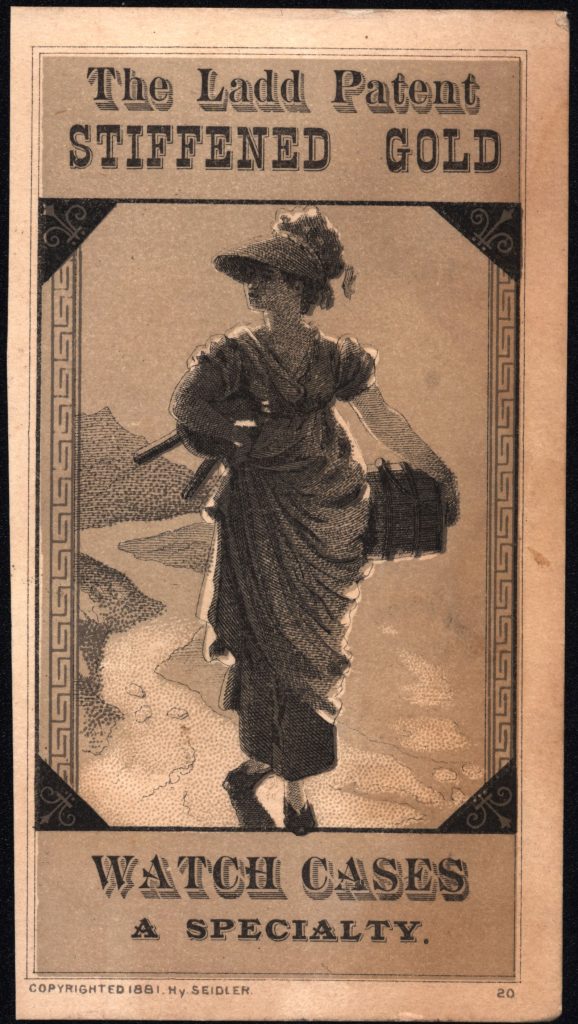Cases
The National Gold & Silver Stamping Act, passed in 1906, was the most consequential law regulating markings on watch cases in the early 1900s. However, it quickly became apparent that.
Markings on watch cases in the United States were unregulated at the federal level until 1905. Unfortunately, this environment nurtured deceptive practices in the watch case industry. From debased solid.
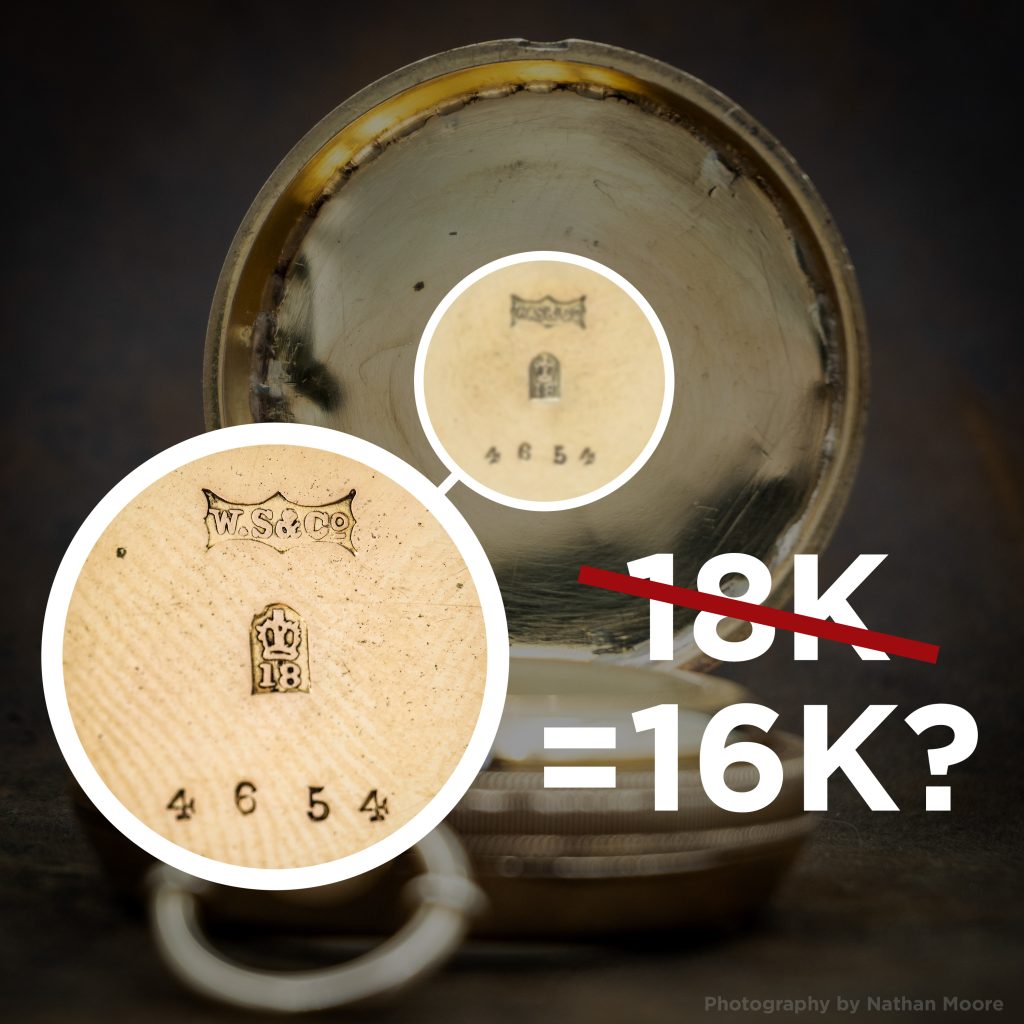
Unlike the robust hallmark system enforced in England, the United States did not begin regulating markings on precious metals at the federal level until 1905. During the early decades of.
Being able to reliably determine whether a case is gold or gold-filled is a vital skill when purchasing antique pocket watches, especially with the various myths spread about gold and.
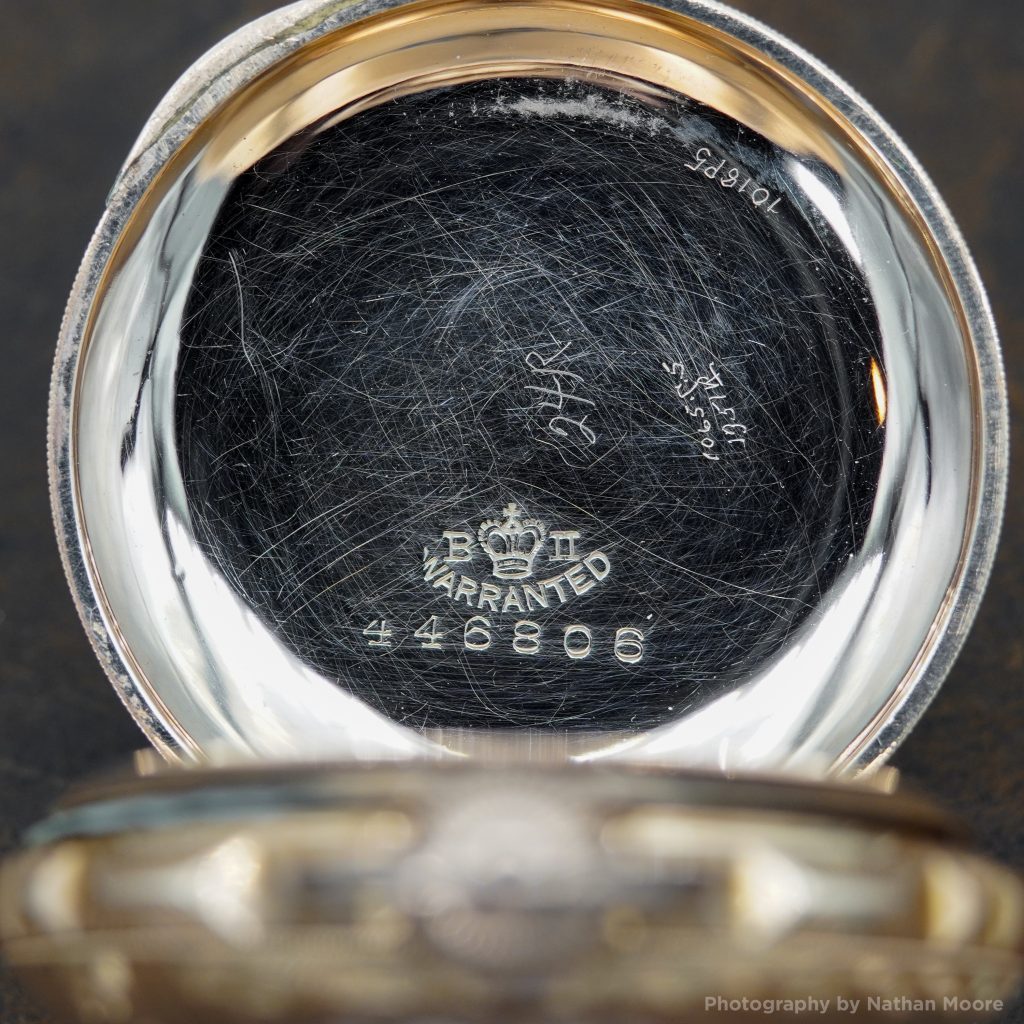
Most American watch case manufacturers experimented with various methods to market cases that were more durable and less expensive than precious metals while maintaining a similar appearance. One of the.
In my most recent article, we explored Ezra C. Fitch's 1874 patented design, a rare clamshell watch case originally sold by Pforzheimer, Dreyfus & Keller. At the time, the only.

